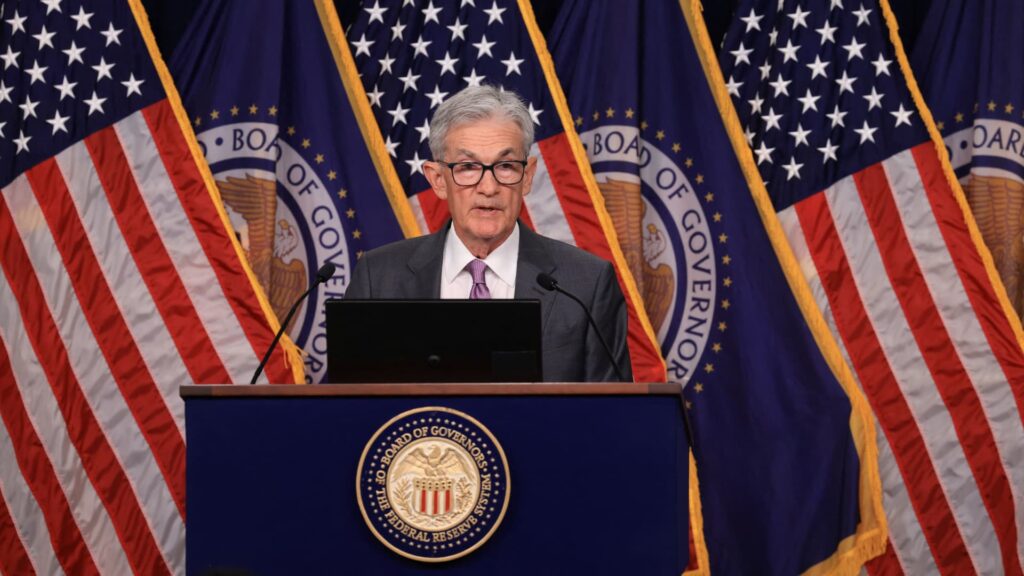Federal Reserve Chairman Powell speaks at a press conference after the two-day Federal Open Market Committee interest rate policy meeting in Washington, the United States, on July 31, 2024.
Kevin Mohart | Reuters
Federal Reserve officials moved closer to their low-inflation goal when they met on Tuesday, but the extent to which they will ease interest rates remains an open question.
Inflation data for the week showed price pressures have eased sharply since a meteoric rise in 2021-22. A measure of consumer prices showed 12-month inflation at its lowest level since February 2021, while a measure of wholesale prices showed pipeline price increases were largely contained.
Both figures are certainly enough to clear the way for a rate cut at the Federal Open Market Committee meeting, which ends on Wednesday with a rate decision and an update on the central banker’s forecasts for future developments.
Claudia Sahm, chief economist at New Century Advisors, told CNBC on Friday that “we’ve had another two months of good inflation data” since the last Fed meeting. “That’s what the Fed is asking for.”
However, the question now turns to how aggressively the Fed should act. Financial markets, while providing guidance on where the central bank should go, have provided no help.
For much of the past week, futures markets had priced in a steep quarter-percentage point cut, or 25 basis points. However, the situation reversed on Friday, with traders looking almost likely to cut rates by 25 basis points, or half a basis point, or 50 basis points, according to CME Group’s FedWatch tool.
Sam is among those who think the Fed should step up its game.
She said the inflation data “should by itself take us to 25 next week, which is what it should be, and we’ll get a series of cuts after that”. “The federal funds rate has been above 5% and has been in place to fight inflation for over a year. The battle has been won. They need to start getting out of the way.”
Sam said that would mean first cutting interest rates by 50 basis points to lay the groundwork for a potential labor market recession.
“The labor market [since] Last July was already soft,” she said. “So there’s an aspect that needs to be readjusted. We’re getting more information. [Fed officials] Need to clean up, cut interest rates by 50 basis points, and then be ready to do more.
confidence in inflation
The inflation report suggests that the fight to get inflation back down to 2% is not quite over yet, but things are at least moving in the right direction.
The all-item consumer price index edged up just 0.2% in August, and the full-year inflation rate was 2.5%. Excluding food and energy, the core inflation rate is 3.2%, still far from the Fed’s target.
However, much of the core advantage comes from high housing costs, fueled by the Bureau of Labor Statistics’ convoluted “rent equivalent for landlords” measure, which asks homeowners what they could earn if they rented out their homes What. This indicator accounts for approximately 27% of the total weight of CPI, an increase of 5.4% compared with the same period last year.
Despite lingering pressure, consumer surveys show confidence that inflation has been contained, if not completely contained. A September University of Michigan survey showed that respondents expected inflation to be 2.7% in the next 12 months, the lowest level since December 2020.
Taking into account various inflation dynamics, Fed Chairman Jerome Powell said in late August that he had “increased confidence” that inflation would return to 2%.
That leaves only employment. In the same speech at the Fed’s annual retreat in Jackson Hole, Wyoming, Powell said the Fed “does not seek or welcome further cooling of labor market conditions.”
The Fed has two mandates—price stability and a healthy job market—and its primary mission appears to be about to change.
“If Powell wants to make good on his promise, ‘We want the economy to not weaken further, not cool further,’ they’re going to have to actually move here because the cooling trend is already established,” Sam said. “Before the disruption, we will continue to see employment declines, [the] Unemployment rises.
A quarterly case
To be fair, market expectations for a 25 basis point rate cut by the Federal Reserve at next week’s meeting are quite large, reflecting that the central bank still has more work to do on inflation and that it is not overly worried about the labor market or the job market. .
“That’s really the key thing they need to hone in on is that they’re normalizing policy rather than trying to provide support for a really struggling economy,” said Tom Simons, U.S. economist at Jefferies. Loose environment. “I think they’ve done a really good job of making that point so far. “
Even if Simons predicts that the Fed will take a quarter-percentage point move, there is still plenty of room for the Fed to take more action later.
Indeed, markets are pricing in a possible 1.25 percentage point drop in interest rates by the end of 2024, suggesting some urgency in lowering benchmark borrowing costs to 5.50% from a 23-year high (currently 5.25%).
“The whole reason they’re so cautious about cutting rates is they’re worried about inflation coming back,” Simons said. “Now, based on the data they’re showing, they’re a lot more confident. [inflation] Won’t be back now. But they do need to monitor potential changing dynamics very carefully.
